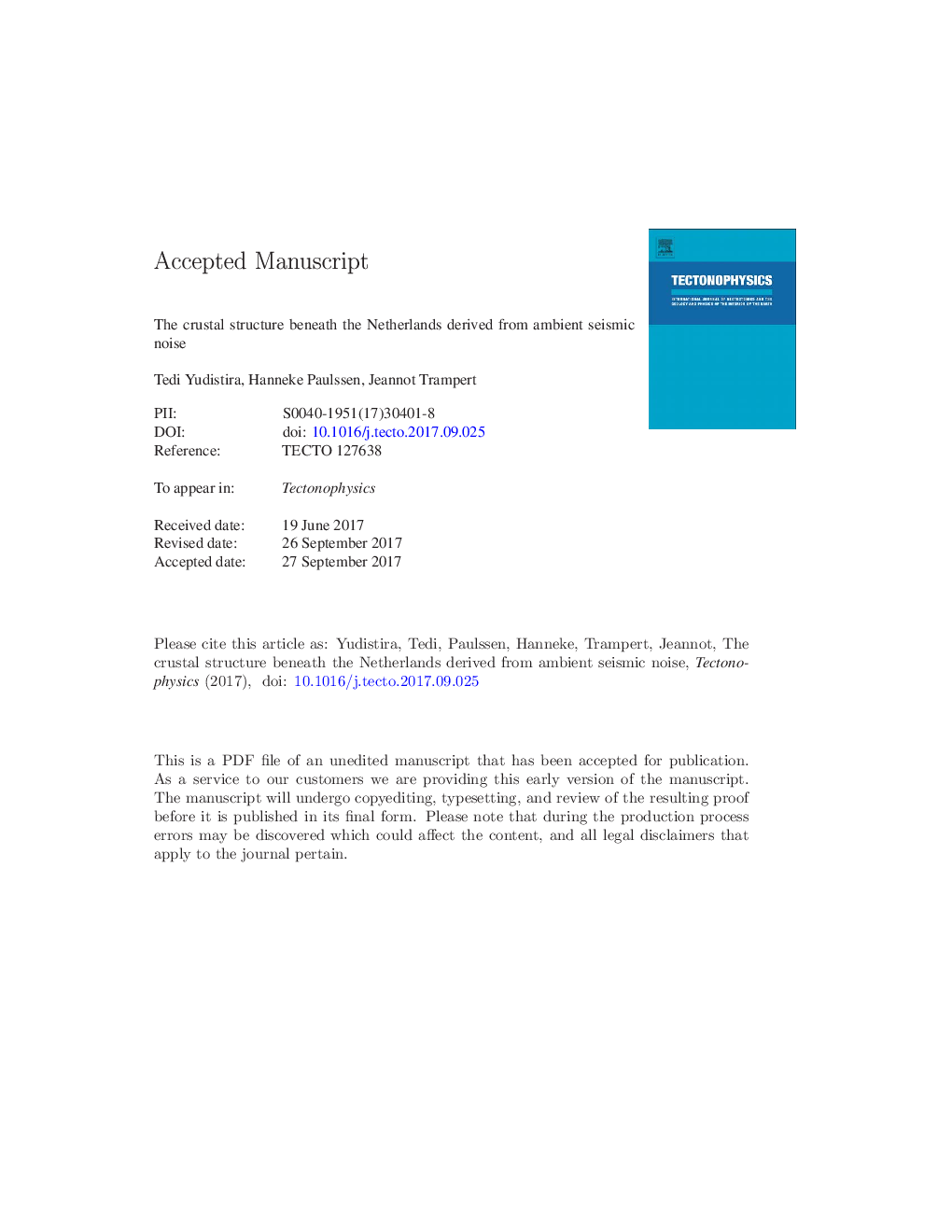| Article ID | Journal | Published Year | Pages | File Type |
|---|---|---|---|---|
| 8908865 | Tectonophysics | 2017 | 36 Pages |
Abstract
This work presents the first comprehensive 3-D model of the crust beneath The Netherlands. To obtain this model, we designed the NARS-Netherlands project, a dense deployment of broadband stations in the area. Rayleigh and Love wave group velocity dispersion was measured from ambient noise cross-correlations. Azimuthally anisotropic group velocity maps were then constructed and the isotropic part was used to determine a shear wave speed model that includes the effects of radial anisotropy. Employing the Neighbourhood Algorithm for the depth inversion, we obtained probabilistic estimates of the radially anisotropic model parameters. We found that the variations in the thickness of the top layer largely match the transition from sediments of Permian age to those of Carboniferous age. Regions of high faulting density such as the West Netherlands Basin and Roer Valley Graben are recognized in our model by their negative radial anisotropy (VSH â VSV < 0). The model has a mid-crustal discontinuity at a depth of around 13 km and the average Moho depth is 33 km, with most of its depth variations within 2 km. Specifically, a localized Moho uplift to a depth of 29 km is found within Roer Valley Graben, in the Campine region in Belgium. Furthermore, our Rayleigh and Love wave group velocity data at periods of around 20 s show evidence for azimuthal anisotropy with a NW-SE fast direction. This anisotropy is likely related to NW-SE rock fabric in the lower crust thought to originate from the Caledonian deformation.
Related Topics
Physical Sciences and Engineering
Earth and Planetary Sciences
Earth-Surface Processes
Authors
Tedi Yudistira, Hanneke Paulssen, Jeannot Trampert,
